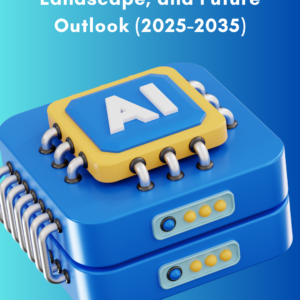1. Executive Summary
-
- Key findings on organizational best practices in software companies
- Critical success factors for aligning workforce with product lifecycle stages
- Top trends shaping organizational structures in tech companies
2. Introduction to Software Company Organizational Structures
-
- Evolution of organizational models in tech
- Impact of cloud and SaaS on company structures
- Balancing innovation, delivery, and lifecycle management
3. Organizational Setup: Key Principles for Delivery Organizations a. Team Structures
-
- Cross-functional vs. specialized teams
- Agile squads and scaled agile frameworks
- Matrix organizations in software delivery b. Role Alignment
- Defining clear roles and responsibilities
- T-shaped professionals and versatility
- Leadership roles in software delivery organizations
4. Project Skills Across the Product Lifecycle
a. Pre-sales and Solutioning
-
- Technical pre-sales expertise
- Solution architecture skills
- Business case development capabilities
b. Pre-verification of Solutions
-
- Proof of concept development skills
- Technical validation expertise
- Risk assessment capabilities
c. Delivery Phase
-
- Project management methodologies (Agile, Waterfall, Hybrid)
- Technical implementation skills
- Quality assurance and testing expertise
d. Support and Lifecycle Management
-
- Customer success management
- Continuous improvement and optimization skills
- Long-term maintenance and upgrade capabilities
5. Talent and Resource Management
a. Staffing Strategies
-
- Building vs. buying talent
- Utilization of gig economy and freelancers
- Global talent acquisition and remote work considerations
b. Funding Models
-
- Project-based vs. product-based funding
- Investment in R&D and innovation
- Balancing short-term delivery with long-term capability building
c. Skill Development
-
- Continuous learning and upskilling programs
- Mentorship and knowledge transfer initiatives
- Certifications and partnership-driven training
d. Leveraging Synergies
-
- Centers of excellence for shared capabilities
- Communities of practice for knowledge sharing
- Cross-pollination of skills across product lines
6. Operating Model Transition: Hardware to Software-Centric
a. Cultural Transformation
-
- Shifting from product-centric to service-oriented mindset
- Embracing agility and continuous delivery
- Fostering innovation and experimentation
b. Organizational Restructuring
-
- Flattening hierarchies for faster decision-making
- Creating product-focused teams
- Integrating hardware and software teams effectively
c. Process Reengineering
-
- Adopting DevOps and CI/CD practices
- Implementing agile at scale
- Shifting from project to product management
d. Technology Stack Adaptation
-
- Embracing cloud-native technologies
- Implementing microservices architectures
- Leveraging AI and machine learning in development processes
7. Best Practices in Customer-Centric Delivery
-
- Co-creation methodologies with customers
- Embedding customer success functions in delivery teams
- Iterative feedback loops and rapid prototyping
8. Metrics and KPIs for Organizational Effectiveness
-
- Measuring team performance and productivity
- Customer satisfaction and success metrics
- Innovation and time-to-market indicators
9. Change Management in Organizational Transitions
-
- Strategies for managing resistance to change
- Communication plans for organizational shifts
- Training and enablement programs for new ways of working
10. Future Trends in Software Company Organizations (2025-2035)
-
- Impact of AI and automation on organizational structures
- Evolution of remote and distributed work models
- Emerging roles and skills in software delivery
11. Case Studies
-
- Successful organizational transformations in tech companies
- Innovative approaches to talent management and skill development
- Lessons learned from failed reorganizations
12. Challenges and Mitigation Strategies
-
- Addressing skill gaps and talent shortages
- Managing technical debt while innovating
- Balancing standardization with customization in delivery
13. Regulatory and Compliance Considerations
-
- Impact of data protection regulations on organizational structures
- Industry-specific compliance requirements and their organizational implications
- Ethical considerations in AI and software development
14. Conclusion and Recommendations
-
- Key takeaways for organizational excellence in software companies
- Strategic recommendations for various stakeholders
- Outlook for organizational structures in the tech industry
15. Appendices
-
- Glossary of organizational and software development terms
- Sample organizational charts for different company sizes and types
- Skill matrix template for software delivery roles
#SoftwareCompanies #TechOrganization #WorkforceAlignment #ProductLifecycle #AgileTeams #CrossFunctionalTeams #MatrixOrganizations #DevOps #AIinSoftware #RemoteWork #CloudSaaS #TechTalent #SkillDevelopment #OrganizationalTransformation #CustomerSuccess





